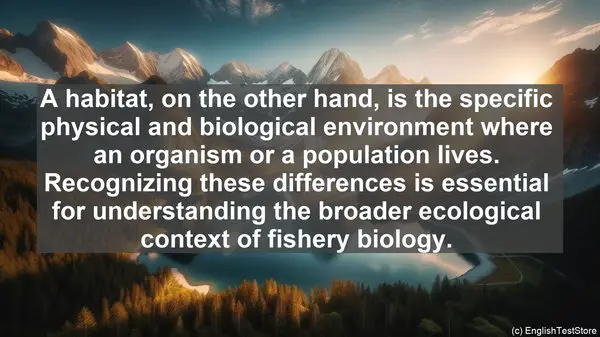Introduction
Welcome to today’s lesson on fishery biology. In this lesson, we will be discussing the top 10 commonly confused words in this field. Understanding these words is crucial for a comprehensive understanding of fishery biology. So, let’s dive right in!
1. Stock vs. Species
One of the most fundamental distinctions in fishery biology is between stock and species. While a species refers to a group of organisms that share common characteristics and can interbreed, a stock refers to a specific population of a species in a particular area. Understanding this difference is essential for effective management and conservation strategies.
2. Migration vs. Dispersal
Migration and dispersal are often used interchangeably, but they have distinct meanings. Migration refers to the regular, seasonal movement of organisms from one location to another, often for breeding or feeding purposes. On the other hand, dispersal refers to the one-time movement of individuals away from their birthplace, typically to find new habitats. Both processes play crucial roles in the dynamics of fish populations.
3. Recruitment vs. Reproduction
Recruitment and reproduction are related but distinct concepts. Reproduction refers to the act of producing offspring, while recruitment refers to the addition of those offspring to the population. Understanding the factors that influence recruitment, such as predation or habitat availability, is vital for assessing the health and sustainability of fish stocks.
4. Bycatch vs. Target Species
In fishing, bycatch refers to the unintentional capture of non-target species. This can include juvenile fish, endangered species, or other marine organisms. Distinguishing between bycatch and the target species is crucial for sustainable fishing practices and minimizing ecological impacts.

5. Overfishing vs. Overfished
Overfishing is the act of harvesting fish at a rate that exceeds their reproductive capacity, leading to population decline. On the other hand, a fish stock is considered overfished when its population has declined to a level where it may not recover without management intervention. Understanding these terms is essential for implementing effective fisheries management strategies.
6. Biodiversity vs. Species Richness
Biodiversity refers to the variety of life forms in a given area, encompassing not only the number of species but also their genetic, ecological, and functional diversity. Species richness, on the other hand, simply refers to the number of different species present. Recognizing the broader concept of biodiversity is crucial for conservation efforts.

7. Pelagic vs. Benthic
Pelagic and benthic are terms used to describe different habitats in aquatic ecosystems. Pelagic refers to the open water column, where organisms are not in direct contact with the seafloor. Benthic, on the other hand, refers to the bottom of the water body and the organisms that inhabit it. Understanding these terms helps in studying the distribution and ecology of fish species.
8. Ecosystem vs. Habitat
While related, ecosystem and habitat are distinct concepts. An ecosystem refers to a community of organisms and their interactions with each other and the environment. A habitat, on the other hand, is the specific physical and biological environment where an organism or a population lives. Recognizing these differences is essential for understanding the broader ecological context of fishery biology.
9. Trophic Level vs. Food Chain
Trophic level and food chain are both concepts related to the flow of energy and nutrients in an ecosystem. A trophic level refers to the position an organism occupies in a food chain, such as primary producer, herbivore, or top predator. A food chain, on the other hand, is a linear representation of the transfer of energy and nutrients from one organism to another. Understanding these concepts is vital for studying the dynamics of fishery ecosystems.
10. Aquaculture vs. Capture Fisheries
Aquaculture, often referred to as fish farming, is the practice of cultivating fish or other aquatic organisms in controlled environments. Capture fisheries, on the other hand, involve the harvesting of fish from natural water bodies. Both play important roles in meeting the global demand for seafood, but they have distinct ecological and management considerations.
